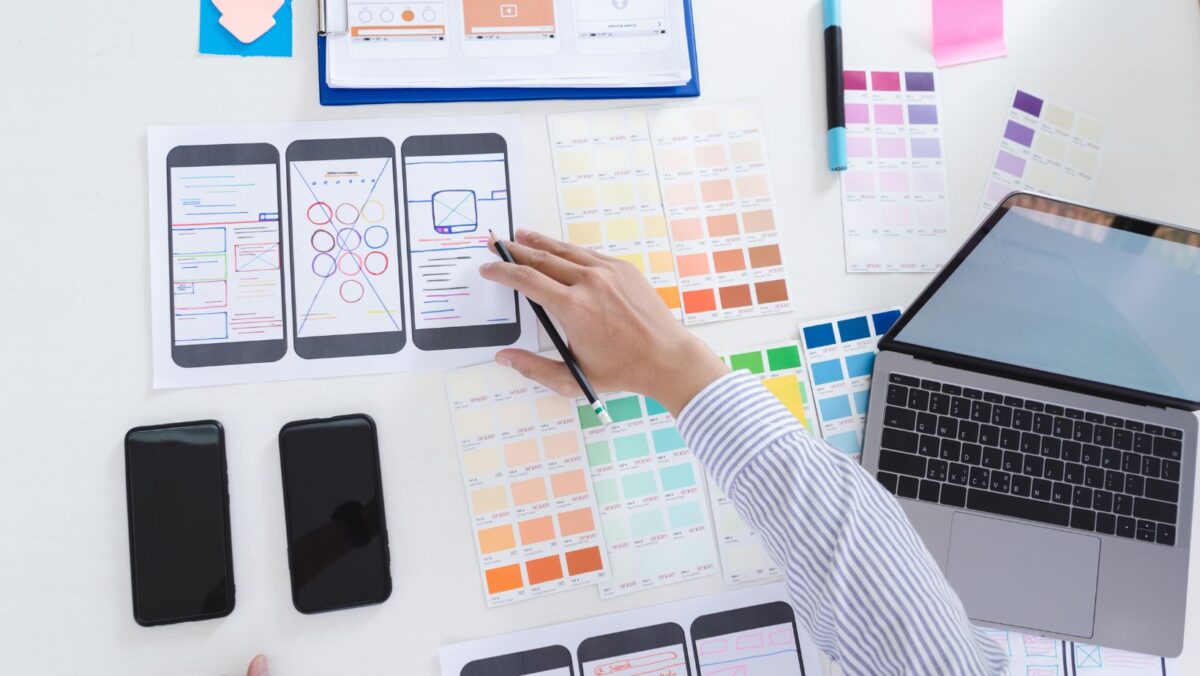What Are Your Goals For Exploring The Field of UX Design?
As a seasoned expert in the digital realm, UX design has always piqued my interest. It’s the heart of every successful digital product, and I’m excited to dive deep into this fascinating field. My primary goal is to understand the nuances of user behavior, their needs, and how to create interfaces that are not only visually pleasing but also user-friendly.
Having spent years in the tech industry, I’ve seen how a well-designed user interface can significantly impact a product’s success. That’s why I’m eager to explore UX design. My aim is to master the art of crafting seamless user experiences that are intuitive and engaging. By doing so, I’ll be able to contribute to the development of products that truly resonate with users.
I’m also intrigued by the constant evolution in UX design. It’s a field that never stands still, with new trends and technologies emerging all the time. I’m keen to stay ahead of the curve, learning about these advancements, and integrating them into my work. In this way, I’ll ensure that the digital solutions I’m involved in are cutting-edge, meeting the ever-changing demands of users.
Understanding UX Design
In search of what truly shapes successful digital products, I’ve found User Experience (UX) design to sit at the heart of it all. Let’s dive in to understand more.
What is UX Design?
UX Design, short for User Experience Design, revolves around designing products to provide meaningful and relevant experiences to users. It encompasses a broad field, extending beyond the realms of the product’s interface and graphical layout. UX Design dives into understanding the behavior, needs, and motivations of your audience.
This design philosophy is all about crafting digital experiences. It’s about making products not just usable, but also delightful. It involves creating a seamless interaction between the user and the digital world. To me, UX Design is not just a career or a job. It’s an insight into the minds of people, a chance to make their digital interactions enjoyable, and an opportunity to make technology more human-friendly.
The Importance of UX Design
As an aspiring UX designer, I am driven by the significant role it plays in crafting successful digital products. The importance of UX Design cannot be overstated. It can be the distinguishing factor between a successful product and a failed one. Lack of user-centered design can lead to a product that users find hard to use or simply unappealing.
Good UX is good business. In fact, every dollar invested in UX brings 100 dollars in return; that is a ROI of a whopping 9900% (source: Experience Dynamics). This highlights the fact that businesses can’t afford to ignore UX Design in today’s highly competitive digital marketplace.
UX Design is also crucial for customer retention. When users have a negative experience with a product, they’re less likely to return. By focusing on creating positive user experiences, businesses can boost customer loyalty and brand perception.
Lastly, as the digital realm continues to evolve, so does UX Design. Emerging technologies, such as VR and AI, are continuously introducing new ways to interact with digital systems. Staying up-to-date with these trends is not just a necessity – it’s a survival strategy in this fast-paced world.

Setting Goals for Exploring UX Design
If you’re venturing into the realm of UX design, one of the first crucial steps you’d want to take is to set clear and precise goals. It helps frame your learning journey and aligns your ambitions with industry requirements. This can be a world-changing pursuit. Trust me, I’ve been down this road and I still find it highly rewarding every single day of my life.
Defining Career Goals in UX Design
Deciding on career goals in the ever-evolving field of UX design is critical. You have to understand what it means for you – is it just about landing that dream job or is there more you’d like to achieve? Personally, my goals ranged from problem-solving, to understanding user behavior, and creating digital experiences that were not just usable, but delightful for users.
- Define what UX means to you
- Identify your long-term and short-term objectives
- Work towards obtaining necessary skills to make strong impacts and deliver great experiences.
Doing this gave my UX journey the direction it needed. But that was my path, let’s talk about yours.
Identifying Personal Interests and Strengths
We all have unique strengths. Identifying yours will help channel your capabilities towards making meaningful contributions. You shouldn’t ignore your personal interests. Do you enjoy problem-solving, interaction design, research or maybe wireframing and prototyping? My love for interviewing users and understanding their behavior has played an instrumental role in my UX career.
- Discover your passion or interests in UX
- Identify your strengths
- Harness these strengths into your UX practice
Remember, there is no rigid path in UX. You can marry your interests with the needs of the profession.

